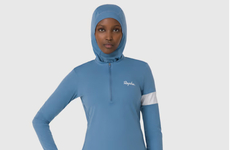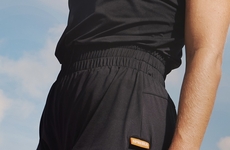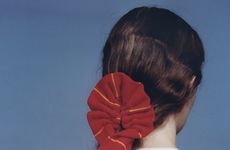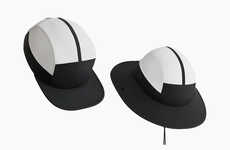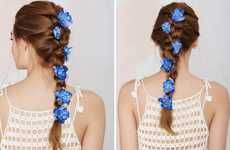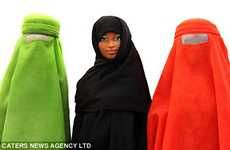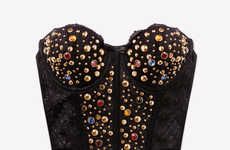
The Sports Hijab is Designed to Let Muslim Women Compete in Modesty
Michael Hines — June 8, 2011 — Social Good
While the FIFA ban on headscarves probably won't be lifted anytime soon, it won't really matter if Muslim women start donning the Sports Hijab. Designed by Elham Seyed Javad of ResportOn, the Sports Hijab was created to let Muslim women compete at the highest level without having to sacrifice their modesty.
The Sports Hijab tucks into shirts and has a special pouch designed to hold hair. The material of the hijab is designed to absorb sweat faster, with a dry-rate 14 times faster than that of cotton hijabs. While I don't have an opinion one way or the other on headscarves in sports, it is nice to see a company creating a piece of much-needed sports wear for such a niche market.
The Sports Hijab tucks into shirts and has a special pouch designed to hold hair. The material of the hijab is designed to absorb sweat faster, with a dry-rate 14 times faster than that of cotton hijabs. While I don't have an opinion one way or the other on headscarves in sports, it is nice to see a company creating a piece of much-needed sports wear for such a niche market.
Trend Themes
1. Sports Hijab - Designing athletic headscarves specifically for Muslim women allows for more inclusivity and representation in sports.
2. Modest Athletic Wear - Developing sports apparel that caters to modesty allows for a wider range of women to participate in athletics without compromising their cultural or religious values.
3. Inclusive Sports Wearables - Creating innovative sportswear that addresses the needs and preferences of underrepresented groups, such as the Sports Hijab, enhances inclusivity in the sports industry.
Industry Implications
1. Sports Apparel - The sports hijab presents an opportunity for sports apparel companies to tap into a niche market and offer diverse product options.
2. Fashion and Clothing - The demand for modest athletic wear opens up new avenues for fashion brands to create inclusive and stylish options that cater to diverse cultural needs.
3. Sports and Fitness - The development of inclusive sports wearables, like the Sports Hijab, allows the sports and fitness industry to foster greater diversity and encourage participation from underrepresented groups.
1.3
Score
Popularity
Activity
Freshness


